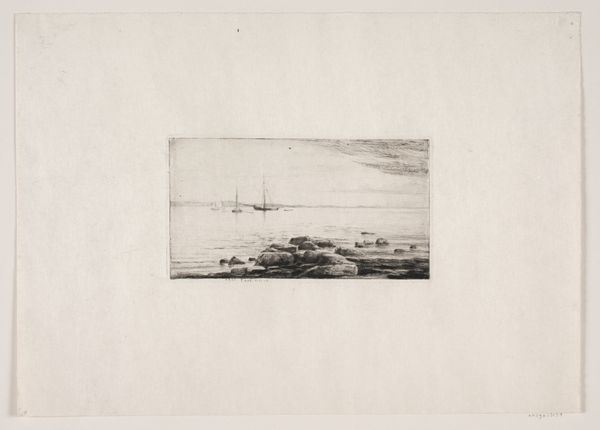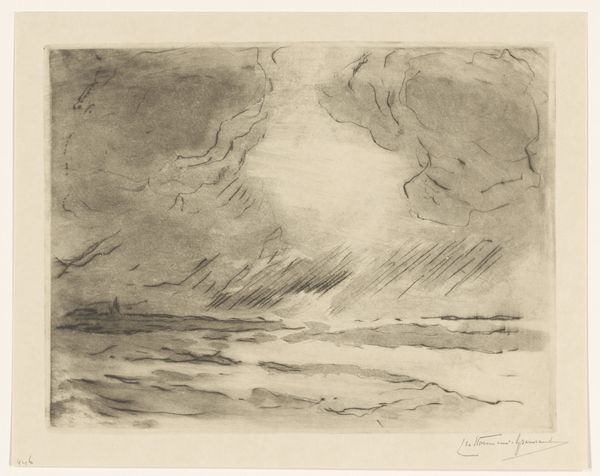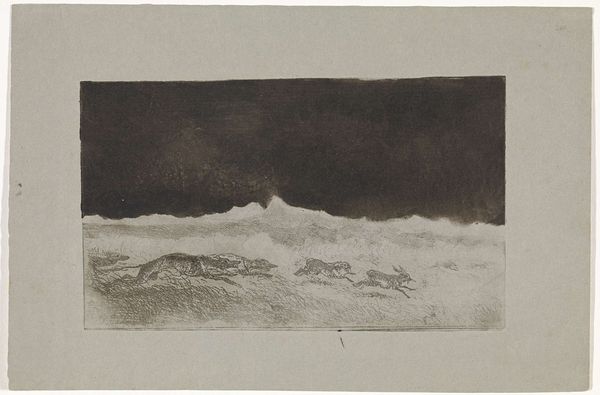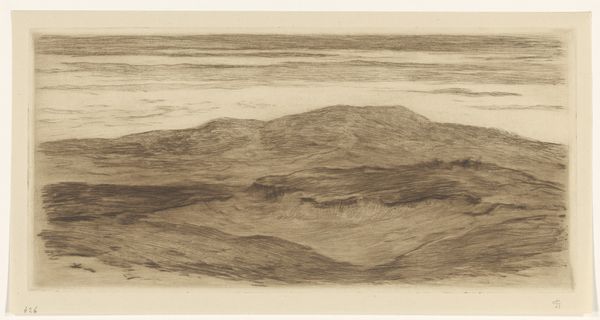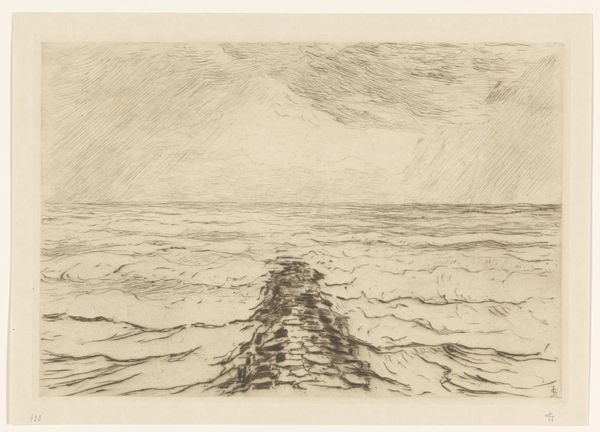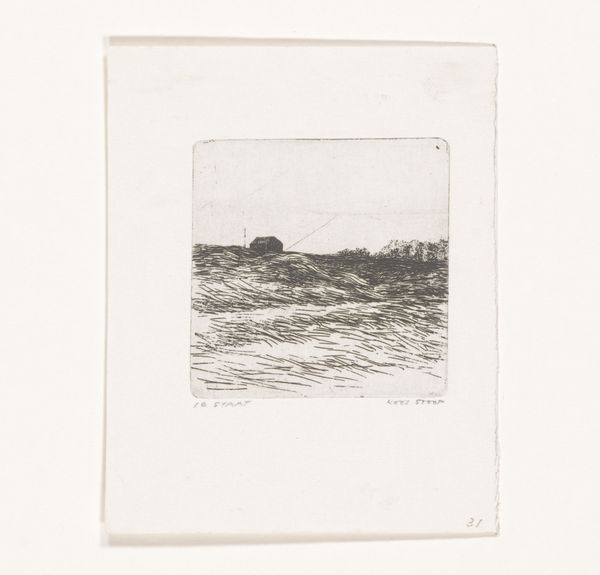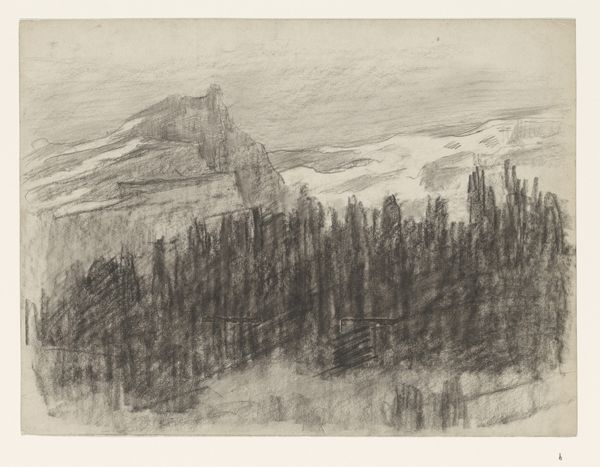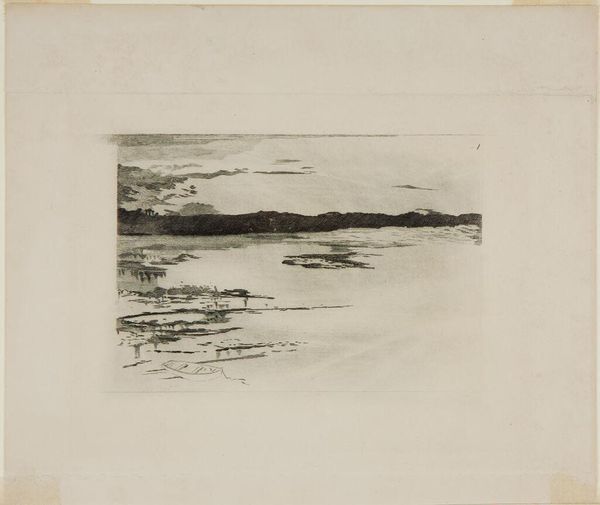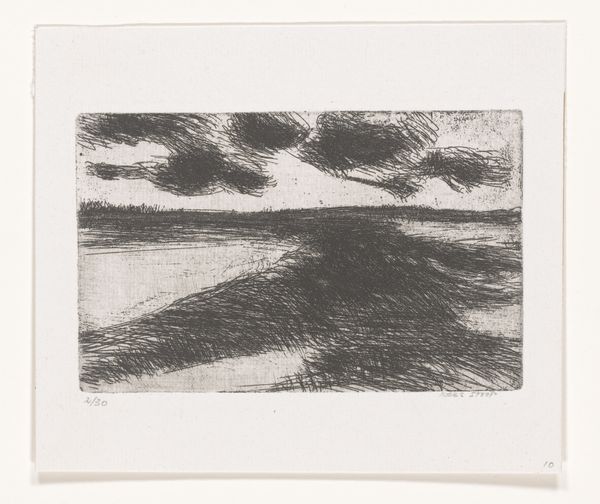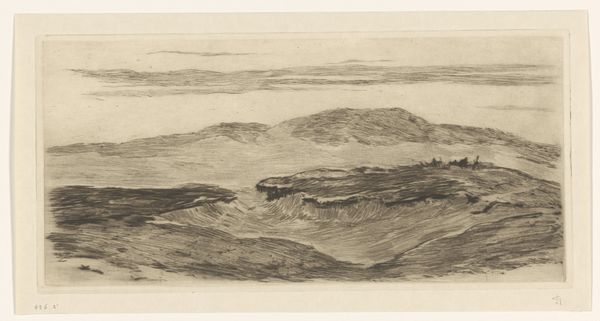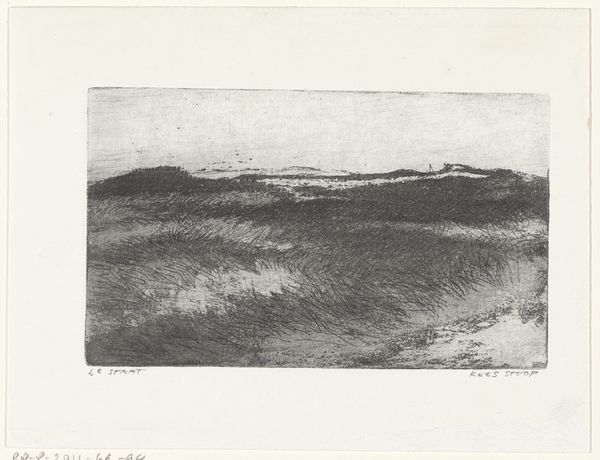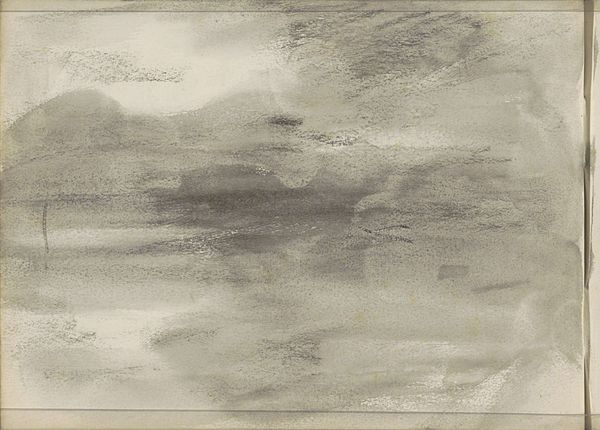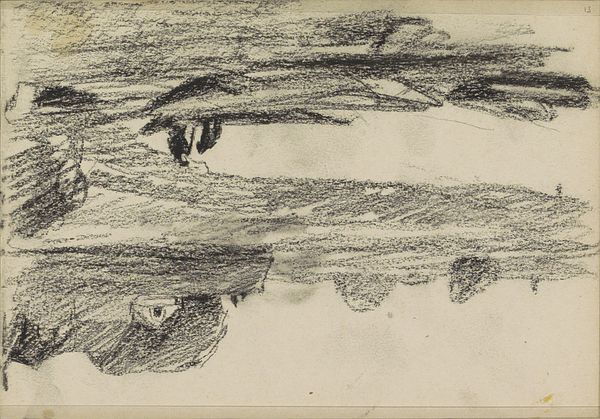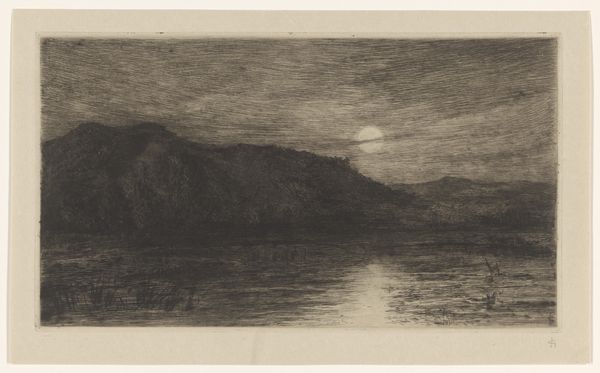
Dimensions: 64 × 158 mm (image/plate); 138 × 312 mm (sheet)
Copyright: Public Domain
Curator: The somber mood that immediately hits you looking at this etching—so small on that large paper. It’s a landscape scene by David Young Cameron called *Sketch on the Tay* from 1908. Editor: It does evoke such a quietness. Almost ghostly, perhaps intentionally given the tonal variations of the materials used here in its making. Curator: Well, given Cameron’s Scottish identity and the cultural context of his time, this tranquil river scene is steeped in the history of Scottish landscape painting. It depicts the River Tay, reflecting an aesthetic appreciation for the beauty of his homeland. It draws upon that artistic legacy. Editor: Agreed, and understanding that history shapes our view. Thinking of it in terms of its materiality – the paper itself, and the etching process Cameron employed – it points to printmaking as a powerful tool for democratization of art, as production enabled broader access. How might we see this act of choosing print as one of democratizing art in practice? Curator: It's a fascinating reading. The Scottish art scene in the late 19th and early 20th century also experienced waves of emigration as urban industrial centers and colonialism affected economic structures at home. Art played a role in voicing both resistance and nostalgia—which might also be the somber mood. Editor: The very labor embedded within each impression then gives a political meaning of value to place through making, perhaps we should understand the act of viewing itself as participatory in that exchange of labor? Curator: Precisely! This shifts our reading away from mere aesthetic appreciation toward deeper social consciousness. Also given his technique here with the tonality, he emphasizes light. Think of that also within broader sociopolitical enlightenment. Editor: Yes, looking at that heavy weighting to darkness does give some foreboding quality to it. Something in opposition to any enlightened ideal—it is powerful, and you're right, so rooted in sociopolitical reality. Thanks for pointing that out. Curator: And thank you for drawing our attention back to the materiality. I think by considering all the perspectives, this artwork gains much broader context. Editor: Indeed, considering how things are made provides fresh readings even for historical pieces like this.
Comments
No comments
Be the first to comment and join the conversation on the ultimate creative platform.
